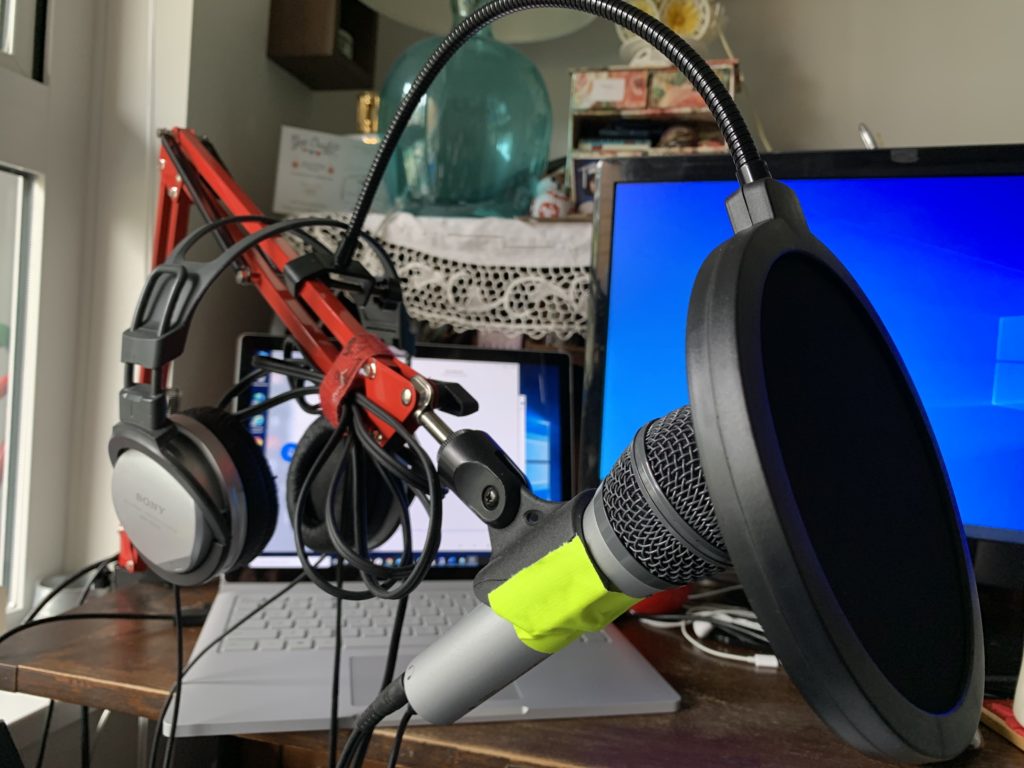[This is a lightly edited version of a Twitter thread I posted in November 2020]

Even after a year of it, your videoconference audio is still bad. If you don’t realize this, it’s definitely bad. Fortunately, it’s easier to fix than you’d think.
First, and most important: USE HEADPHONES. This makes an enormous difference to how you sound to others. It may seem strange to put headphones above the microphone, but most videoconference software works very hard to avoid feedback from your speakers into your own microphone. The key tricks it uses are cutting off the audio you hear when you speak, and killing your mic when you aren’t speaking. The software works very hard to do this well, but it’s far from perfect, and if you have headphones, it doesn’t have to do this at all.
Next, use a microphone. In a pinch, the mic on a set of earbuds is usually much better than the built-in mic on your camera, mobile device, or computer, for fussy technical reasons. Better mics are better, but I’ll talk about those later.
Test your audio. Most video apps have a self-test mechanic, or you can use Voice Recorder or similar apps to check and play back. This won’t find all issues (again, fussy technical reasons) but if you have a mic and headphones, this will confirm you’re on the right track.
If you’re still seeing audiovisual problems, check your network connection. I won’t get into the details, but an online speed test can baseline whether you’re getting the speed you’re paying for. Hint though: if you’re on Wifi, use 5 GHz (for fussy tech reasons…).
Do only these things (use headphones, use a microphone that is closer to your mouth than the built-in one on your device) and your sound will immediately be above average. If you do just these two things, you’ll sound just fine to almost everyone.
But if you want to up your game substantially for under $200, get a good mic. I can’t do better than Marco’s advice, don’t forget the cheap boom arm and pop filter. I have been spectacularly happy with an Audio Technica ATR-2100U. The successor model, the ATR-2100X, is virtually the same except with a shiny new USB-C connector. The mic that I bought for about CAD$80 a few years ago is now more expensive, but it remains one of the cheapest and most flexible options among Marco’s choices for good microphones.
If $200 is outside of your (or your employer’s) budget, a solid second best is a USB (aka gamer) headset. Acceptable ones can be had for $40 or less. I’m recommending a USB headset for yet more fussy technical reasons, but they work better for most people than a similarly priced analog (aka 1/8″ jack, aka 3.5 mm jack) headset. Bluetooth headsets are also okay, if you have reasons to prefer a wireless connection to your device.
Final Thoughts
If you’re not using headphones at this point, you’re making a mistake. You can’t hear how bad it is, that’s one of the ironies of bad audio. Good audio ensures you are HEARD. You’ll sound more authoritative, and you will be taken more seriously.
